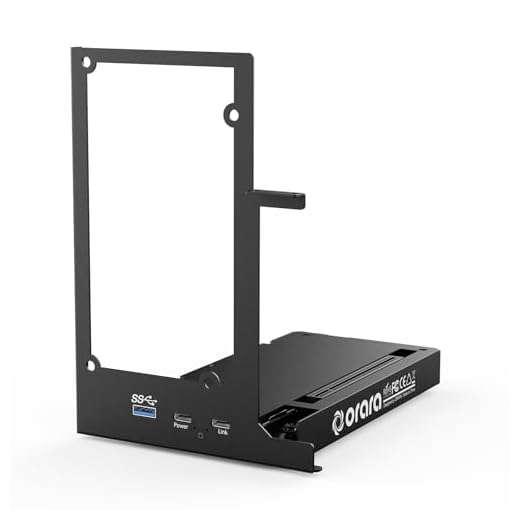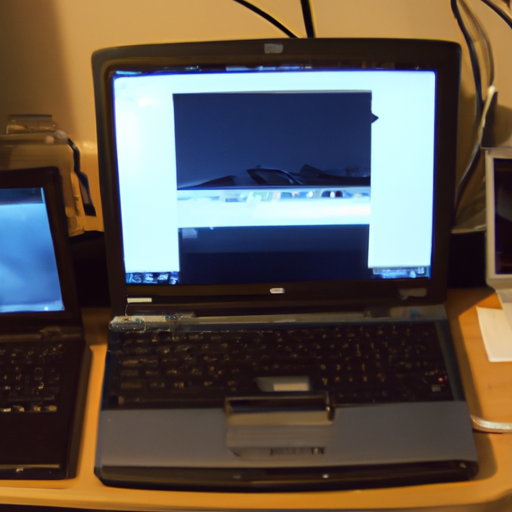







Are you wondering if it’s possible to connect multiple external monitors to your laptop? The concept of daisy chaining has been gaining popularity among individuals looking to expand their workspace. In this article, we will explore whether or not you can daisy chain multiple external monitors to your laptop and provide you with the essential information you need to know. So, if you are eager to enhance your productivity and maximize your screen real estate, keep reading to find out more!
Understanding Daisy Chaining
Definition of daisy chaining
Daisy chaining is a method of connecting multiple devices to each other in a linear or sequential manner, where each device is connected to the next one in line. This configuration allows for a single connection to the main source or host device, simplifying cable management and reducing clutter. In the context of monitors, daisy chaining enables you to connect multiple monitors to a single video output on your laptop or computer.
How daisy chaining works
To understand how daisy chaining works, imagine a chain of devices where each device has one input port and one output port. The output port of the first device is connected to the input port of the second device, and so on. The final device in the chain is connected back to the main source or host device. This creates a single connection path for data and video signal transmission. Each device in the chain can display the same image or have its own unique display.
The Concept of Daisy Chaining Monitors
Applying daisy chaining to monitors
Daisy chaining monitors involves connecting multiple monitors together in a series using the available output ports. The first monitor in the chain is connected directly to the video output port of your laptop, while the subsequent monitors are connected to each other in a daisy chain configuration. This allows you to extend your desktop across multiple monitors or mirror the same content on all the monitors in the chain.
Benefits of daisy chaining monitors
Daisy chaining monitors offers several benefits. Firstly, it simplifies cable management by reducing the number of cables required to connect multiple monitors. Instead of having separate cables for each monitor, a single cable can be used to chain them together. This makes setup cleaner and more organized. Secondly, daisy chaining eliminates the need for additional video output ports on your laptop. You can connect multiple monitors even if your laptop has limited display ports. This makes it a cost-effective solution for those who want to expand their screen real estate without purchasing a new laptop.
Determining If Your Laptop Supports Daisy Chaining
Checking laptop specifications
To determine if your laptop supports daisy chaining, you need to check its specifications or consult the manufacturer’s documentation. Look for information on the available video output ports and the maximum number of monitors that can be connected. Common laptop specifications may include DisplayPort, HDMI, and USB-C outputs, which are commonly used for daisy chaining.
Identifying necessary output ports
To daisy chain monitors, you need a laptop with an output port that supports daisy chaining, such as DisplayPort 1.2 or Thunderbolt 3. These ports are specifically designed to handle multiple displays. Additionally, it is important to check the maximum number of displays that can be connected through daisy chaining. While some laptops may support up to two monitors, others may allow for more, depending on the graphics card capabilities.
The Role of Graphics Card in Daisy Chaining
Understanding graphics card capabilities
The graphics card in your laptop plays a crucial role in determining if you can successfully daisy chain multiple monitors. The graphics card needs to have sufficient processing power and support for the required video output standards to handle the increased workload. High-end graphics cards generally offer better support for multiple monitor setups, while integrated or lower-end graphics cards may have limitations.
Choosing a suitable graphics card for daisy chaining
If you are considering daisy chaining multiple monitors, it is advisable to choose a laptop or graphics card that specifically mentions support for daisy chaining in its specifications. This ensures compatibility and a smoother setup process. Consult the manufacturer’s documentation or do some research to identify which graphics cards have the necessary capabilities for daisy chaining.
Understanding The Types of Ports and Cables Required
Distinguishing between DisplayPort, HDMI, USB-C
When it comes to daisy chaining monitors, it is essential to understand the different types of ports and cables required for connectivity. DisplayPort, HDMI, and USB-C are commonly used ports in laptops, each with its own advantages and limitations. DisplayPort 1.2 and Thunderbolt 3 are the most commonly supported ports for daisy chaining, offering higher bandwidth and better compatibility for multiple displays.
Selecting appropriate cables for connectivity
To successfully daisy chain monitors, you will need to select the appropriate cables for connectivity. DisplayPort to DisplayPort cables are commonly used for daisy chaining, as they provide a high-quality digital signal and support the required bandwidth. However, if your laptop does not have DisplayPort outputs, you can use adapters or other cable types, such as HDMI or USB-C, depending on the available ports on your laptop and monitors.
The Process of Connecting Multiple Monitors to Your Laptop
Step-by-step guide to set up multiple monitors
To connect multiple monitors to your laptop in a daisy chain configuration, follow these steps:
- Ensure that your laptop supports daisy chaining and has the necessary output ports.
- Identify the maximum number of monitors that can be connected through daisy chaining.
- Arrange the monitors in the desired order. The first monitor should be connected directly to your laptop’s video output port.
- Use the appropriate cable to connect the output port of the first monitor to the input port of the second monitor. Repeat this step for subsequent monitors if you have more than two.
- Power on all the monitors in the chain and your laptop.
- Configure the display settings in your laptop’s operating system to extend or duplicate the desktop across the connected monitors.
- Test the setup by moving windows or applications between the monitors to ensure they are functioning correctly.
Potential issues and how to troubleshoot them
While daisy chaining monitors can offer a seamless multi-monitor experience, there may be potential issues that could arise during the setup process. For example, if the monitors are not being detected or if the image quality is poor, you may need to check the following:
- Ensure that your laptop and monitors are powered on and connected properly.
- Verify that you are using compatible cables and ports for daisy chaining.
- Update your graphics card drivers to the latest version.
- Check the display settings in your operating system and adjust them accordingly.
- Restart your laptop and monitors if issues persist.
Analyzing the Limitation of Daisy Chaining Monitors
Maximum number of monitors you can connect
The maximum number of monitors you can connect in a daisy chain configuration depends on several factors, including your laptop’s graphics card capabilities and the specific input/output ports being used. While some laptops may support up to two or three monitors, others with more powerful graphics cards can handle larger multi-monitor setups. It is important to consult your laptop’s specifications or the manufacturer’s documentation to determine the maximum number of monitors supported.
Quality of display resolution in a daisy chain
Daisy chaining monitors does not generally have an impact on the quality of display resolution. Each monitor in the chain can maintain its native resolution, allowing for a high-quality viewing experience. However, it is essential to consider the maximum supported resolution of your laptop’s graphics card and the connected monitors to ensure optimal display quality. Higher resolution displays may require more processing power and could have limitations in a daisy chain setup.
Software Settings For Daisy Chaining
Configuring multiple monitors in Windows
To configure multiple monitors in Windows, follow these steps:
- Right-click on the desktop and select “Display Settings”.
- In the display settings window, you will see all connected monitors. Arrange them in the desired order.
- Select each monitor individually and adjust its resolution and orientation settings.
- Choose whether you want to extend or duplicate your desktop across the monitors.
- Apply the changes and test the configuration by dragging windows or applications between the monitors.
Configuring multiple monitors in MacOS
To configure multiple monitors in MacOS, follow these steps:
- Click on the Apple menu and select “System Preferences”.
- Click on “Displays”.
- In the Displays settings, you will see all connected monitors. Arrange them in the desired order.
- Adjust the resolution, brightness, and other settings for each monitor individually.
- Choose whether you want to extend or duplicate your desktop across the monitors.
- Apply the changes and test the configuration by moving windows or applications between the monitors.
Understanding the Performance of Daisy Chained Monitors
Evaluating the performance of daisy-chained monitors
Daisy chained monitors can provide a seamless and efficient workflow, allowing you to multitask and enhance productivity. The performance of daisy chained monitors primarily depends on your laptop’s graphics card capabilities, as well as the specific applications and tasks you are running. Higher-resolution displays and resource-intensive applications may require more processing power and could potentially impact overall performance. However, for most common tasks such as web browsing, document editing, and multimedia consumption, daisy chaining monitors should not significantly affect performance.
How daisy chaining affects laptop performance
Daisy chaining monitors generally does not have a significant impact on your laptop’s overall performance. The graphics card handles the additional workload of driving multiple displays, but modern laptops are designed to handle this efficiently. However, running multiple displays may consume additional power, which could reduce battery life. It is also important to consider the specific tasks you perform on your laptop, as resource-intensive applications may lead to increased heat generation and potential performance impact.
Applications and Scenarios for Daisy Chained Monitors
Ideal use cases for multiple monitors setup
Daisy chained monitors are highly beneficial in various applications and scenarios. They are particularly useful for professionals working on multitasking-intensive tasks such as video editing, graphic design, data analysis, and programming. With multiple monitors, you can have different applications or documents open on each screen, improving workflow efficiency and reducing the need for constant window switching. Gamers and content creators can also benefit from a multi-monitor setup, enabling them to have gameplay on one screen and supporting tools or media on another.
Advantages of using daisy-chained monitors in different applications
The advantages of using daisy chained monitors in various applications are numerous. In an office or workspace environment, multiple monitors allow for better multitasking, increased productivity, and improved organization. Professionals in creative fields benefit from the ability to have a larger work area, enabling them to view and manipulate content more effectively. Gamers can immerse themselves in the gaming experience with a wider field of view. In educational settings, multiple monitors can facilitate collaborative work and enhance presentations. Overall, daisy chained monitors provide flexibility, efficiency, and an enhanced user experience across different applications and scenarios.







